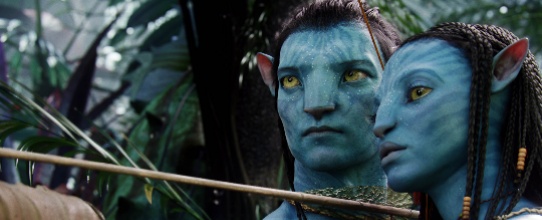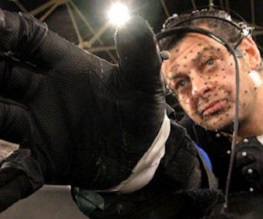The Death of Practical Magic

“[I’m] making as much of this movie practical magic rather than digital magic”. Thus spake Spielberg during the production of Indiana Jones and the Kingdom of the Crystal Skull. Señor Spielbergo originally intended it to resemble its superior predecessors by minimising the amount of post-production CGI effects he’d need. In the end, roughly 30% of the film’s effects were computer-generated, though that should fall to less than 0% for the next installment, Indiana Jones and the Rape of my Childhood Memories.
Mind you, 30% is pretty restrained compared to some examples, where practical magic is sidelined almost exclusively in favour of CGIing everything from sets to characters to the wind in the trees. The biggest offender here is arguably real-life Ewok George Lucas in the Star Wars prequels, where an entire universe is denigrated to the level of charmless and garish pixels. Nobody’s arguing about the practical benefits of using CGI in filmmaking. It’s cheap and resource-efficient, allowing directors far greater freedom than they’ve ever previously enjoyed. But is this freedom necessarily a good thing? Admittedly, if you start off with a duff script then a duff film invariably follows (cf George “Everybody Loves Galactic Trade Disputes” Lucas), but an over-reliance on CGI has jaded audiences to all-too-obvious digital effects. CGI no longer has the wow factor – impressive back in the days of Tron or Jurassic Park, sure, but nowadays an audience barely notices yet another humdrum pan across an implausibly epic landscape.
This may be due, in part, to the fact that CGI allows many of the physically-constraining rules of moviemaking to be broken. Growing up with films, we’ve been subconsciously trained in the language of visual cinema and the limits of what a camera can do. When you’ve got CGI guffery whizzing around at a rate of knots, we know – perhaps without noticing it – that this is dishonest. The ever-suspicious “Suspension of Disbelief” ganglion at the back of our brains knows we’re being deceived. When you watch Lord of the Rings (arguably the most impressive use of CGI in recent years) these sort of flash-bang camera aerobics are at a minimum. As a result, the film visuals are superior and the (mostly static) CGI shots more believable than the plastic landscapes of Lucasfilm. Though Peter Jackson isn’t totally blameless – King Kong was so bloated with CG he might as well have sacked the whole thing off and filmed the XBox game instead.
Yet there’s another aspect of movie artistry that’s been left bleeding on the altar of the digital revolution, and one whose decline represents a sad, sad day for cinema. We’re referring, of course, to the lost arts of puppetry and modelwork. Consider, if you will, the following: Return of the Jedi‘s Jabba the Hutt and the Episode IV Special Edition digital version. The former’s truly repulsive, a reptilian sock bursting with rendered grease and character. His smell alone is almost a physical presence. The latter’s little more than a badly-rendered punchline – a laughable, weirdly-lit Saturday morning cartoon villain who seems to float on the background like an afterthought. No character, no meanace, no point.
As far as practical demonstrations go, here’s a clip from Ray Harryhausen’s The Golden Voyage of Sinbad, produced in 1974:
Putting aside the consummate animation of the Kali statue (and the fact that – ooh! – Tom Baker’s playing the villain), the model itself has weight, depth and mass; precisely the kind of tangibility that even the most sophisticated CGI finds difficult to replicate. It’s ironic, really – $200 million can be spent on special effects, but you can’t buy the almost imperceptibly subtle interactions you get for free from gravity.
Classics such as Ray Harryhausen’s stop-motion monster flicks, Ben Hur, or the funeral scene in Ghandi (which employed no less than 400,000 extras) impress because of their ambition and scale. There’s something deeply satisfying in watching spectacle that has been painstakingly set up and recorded for posterity; as an audience we appreciate the effort because we can see it on the screen. Nobody’s diminishing the work that goes into CGI effects, (cheers, geeks, for individually animating those half a billion hairs on King Kong’s pinkie!) but that doesn’t change the fact that computer generated effects should serve to enhance reality, not replace it.
Of course, this whole discussion may be rendered moot on December 18th with the release of James Cameron’s hotly anticipated Avatar. The buzz surrounding the film has been massive, not least because we’ve been promised the beginning of a new era in stereoscopic filmmaking. The lengths to which Cameron has gone to bridge the gap between live action and CGI is certainly encouraging, not least with a new technique of rendering motion capture directly. This brings a whole new immediacy to CG effects, allowing Cameron to work in real-time with computer generated characters. But is this all little more than a new toy for directors whose effect the audience won’t even notice? If Avatar can’t put the spectacle back into CGI then it’s unlikely anything can. Maybe it’s a good thing that filmmakers will have to return to the tried-and-tested way of impressing audiences with special effects – hard work and ingenuity in the goddamn real world instead of a nebulous blue warehouse. It might be an old-fashioned idea, but – unlike yet another ho-hum pixellated planet, ship or beastie – it’s guaranteed to be appreciated.





Recent Comments